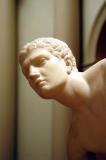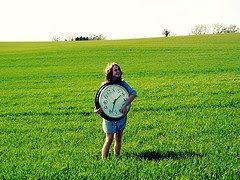 What a piece of work is man, how noble in reason, how infinite in faculties, in form and moving how express and admirable, in action how like an angel, in apprehension how like a god: the beauty of the world, the paragon of animals – and yet to me, what is this quintessence of dust?
What a piece of work is man, how noble in reason, how infinite in faculties, in form and moving how express and admirable, in action how like an angel, in apprehension how like a god: the beauty of the world, the paragon of animals – and yet to me, what is this quintessence of dust?
Hamlet Act II Scene 2 lines 303-309__________________________________________________________
Instructions Jig saw reading
1. Charles Darwin and the theory of evolutionProbably the best way to understand evolution is to follow the thoughts of Darwin himself. But first, just who was Charles Darwin?
He was born in Shrewsbury, England in 1809. He was the son of a doctor, and studied theology at Cambridge University. At the age of 22 he accepted the post of naturalist aboard the sailing ship the HMS Beagle. He published the Origin of Species in 1859 and died in 1882.
In his day it was believed that life had been created by God once and for all as described in the Bible in the book of Genesis. Read the extract from Genesis 1:1 for yourself from the Good News Bible:
Then God commanded, "Let the water be filled with many kinds of living beings, and let the air be filled with birds." So God created the great sea monsters, all kinds of creatures that live in the water, and all kinds of birds. And God was pleased with what he saw. He blessed them all and told the creatures that live in the water to reproduce and to fill the sea, and he told the birds to increase in number. Evening passed and morning came---that was the fifth day. Then God commanded, "Let the earth produce all kinds of animal life: domestic and wild, large and small"---and it was done. So God made them all, and he was pleased with what he saw.It was believed that the number of species was fixed and they were immutable, which means they cannot be changed. this included the idea that they could not become extinct. Any suggestion that species could come into existence through simple natural causes was considered a denial of the existence of a Creator and this of course was a revolutionary idea.
2. Artificial selectionDarwin was interested in domestic animal breeding as well as observing nature. He wrote about the immense diversity of domestic animals and plants. He was especially interested in the origins of this variety.
Darwin was a keen pigeon fancier. The huge variety of pigeon races was due to the careful breeding of one wild species over several centuries. How was this done?
All individual pigeons are different. The breeder selects the individual they like and mates them with others that have similar characteristics. Overtime they can exaggerate characteristics and even add more. Eventually the final variety comes to differ markedly from its wild ancestor, so much so that if an expert was given it they would probably classify it as another species. This process Darwin called “artificial selection”.
Another example that perhaps everyone can relate to is that of dogs. There are now about 150 breeds of dogs. In Darwin’s day it was widely believed that all these varieties were derived from the hybridization of the wolf and jackal followed by artificial selection. It is now believed that all domestic dogs descended from one common ancestor: the wolf.
See
‘Evolution of the family dog’ by George Johnson.3. A common ancestorDuring Darwin’s voyage to the Galapagos Islands, located some 500 km from the Pacific coast of South America, he noticed the enormous variety of animals and plants in nature. What grabbed his attention were the finches.
There were some 13-14 species, all of which were very similar. They differentiated themselves by having slight differences in the shape of their beaks. The large beaked species ate hard seeds, and the fine beaked ones ate insects and soft seeds.
Darwin noticed that despite their differences they all held something in common with a bird from the South American mainland, the warbler finch (
Certidea olivaces) in Ecuador. He suggested that this species could be the ancestor of the Galapagos finches. This has been confirmed using mitochondrial DNA studies (Grant & Grant, 2002).
In turn, the warbler finch descended from a group of finches called grassquit birds (
Tiaris sp) also found on the mainland. These birds are thought to have their origin in a group of birds from the Caribean islands (Sato et al, 2001).
Darwin postulated that with each step backwards in time the ancestors of animal families become more and more primitive, and resemble less and less the modern creatures that we see today. The differences are in part due to modifications that fit new environmental conditions.
Very often the ancestors of modern forms no longer exist because they were ill-adapted to current conditions. For example the ancestor of the wolf is thought to be an extinct animal called Tomacartus which lived about 20 my BP (million years before present). This animal in turn descended from a large group of insectivorous mammals called creodonts, all of which are long extinct.
Darwin thought that if we went far enough back in time we would eventually arrive at the
common ancestor of all living things. He saw species as the branches of a tree (see Grant & Grant, 2002 for a critique of Darwin's metaphor). If we were to trace each branch back we would eventually arrive at the trunk. This ‘trunk’ was the common ancestor of all animal life.
Animal life emerged on earth during what is known as the precambrian (600 my BP). Creatures that are thought to be the earliest ancestors of modern animals and ourselves occured during the Cambrian (400 my BP). The best fossil evidence comes from uplifted marine sedimentary deposits in the Canadian Rockies, known as the Burgess Shale.
The only organism that could possibly be considered as related to modern mammals, and thus ourselves, is the aquatic worm-like organism
Pikaia gracilins . This organism was endowed with a row of muscle blocks along the length of its body, known as a notochord. It is thought that this was a precursor of the first animals with backbones, the chordata, from which humans evolved.
Natural selectionThe question that puzzled Darwin was to identify the mechanism that drove evolution. In other words, how could one species in the wild split into several?
Darwin noticed that most plants and animals had a tendency to produce more offspring than could survive. This created enormous competition between individuals.
He also noticed that each individual was different. Those that possessed an advantageous characteristic would survive to reproduce. They would thus pass on this new and useful trait to their offspring. The offspring would in turn have a competitive advantage over other individuals. Those that did not possess this characteristic would naturally die out and go extinct. In this way characteristics are selected by nature.
Over time species change. Darwin believed that all life forms are in a state of very slow flux. Given enough time a species may change so much that it no longer resembles its ancestor, and one would be forgiven for thinking that it is in no way related.
Darwin was strongly influenced by geologist Charles Lyell and his book Principles of Geology (1830). Lyell showed that the earth was immensely old and had gone through numerous changes, and that numerous species had gone extinct.
Darwin reasoned that if life forms did not change with the earth, life itself would cease to exist. The process of natural selection was a means to maintain life on earth.
Questions:1. Charles Darwin and the theory of evolution1. Who was Charles Darwin - give a few details about his life.
2. How did Darwin's theory challenge the biblical creation story?
Part 2. Artificial selection3. What is artifical selection and how does it work? Give examples
Part 3 A common ancestor4. What is the warbler finch (
Certidea olivaces) of Ecuador and what has it got to do with evolution?
5) What is thought to be the common ancestor of all living things?
Common question6). Explain why you think the quote from Hamlet was used at the beginning of this document?
Class SeminarsThe class seminar will be based on the excellent online PBS teaching program called Evolving Ideas. You will work in groups of 2-3. Your task is to watch your assigned video, understand it and then find a way to communicate what you have learnt to the rest of the class. The class will have a series of questions to ask you about your topic.
PBS Evolving Ideas Student Videos1. Isn't Evolution Just a Theory2. Who Was Charles Darwin?3. How Do We Know Evolution Happens?4. How Does Evolution Really Work?5. Did Humans Evolve?6. Why Does Evolution Matter Now?7. Why Is Evolution Controversial Anyway? Seminar QuestionsEvolution Seminar: Class questions
1. The nature of science.1) How is the word ‘theory’ used in everyday language?
2) In science what are the four elements that make up theory?
3) What is the purpose of theory?
4) What is ‘inference’? Give examples from Darwin’s theory of evolution and gravitation theory.
2. Charles Darwin1) What was the HMS Beagle, where did it go, and why was it important to the development of the theory of evolution?
2) What was the “mysteries of mysteries”?
3) What was Darwin’s conclusion about all living things and how did he arrive at this? You need to talk about 'Artificial' and 'Natural Selection'.
4) What was Darwin’s greatest contribution to biology?
3. Evidence for evolution. 1) What is the importance of the fossil record to the theory of evolution?
2) Did whales originate in water or land?
3) Describe the possible evolutionary development of whales. Include in your description the following fossil animals: Pakicetus, Basilosaurus and Sinonyx.
4. Mechanism of evolution1) What is the purpose of Chris Schneider’s research?
2) What causes new species to come into existence?
3) Natural selection is made up of four processes, what are they and how does each one work? Use the example of hummingbirds to explain the four processes.
4) What did Darwin emphasize repeatedly in
The Origin of Species?
5. Human evolution 1) Explain the meaning of the following words: ancestor, relation, to descend, descendant.
2) Did humans evolve from chimpanzees?
3) What is known about the common ancestor of chimpanzees and humans? What did they look like? When did they live - on the ground or in the trees?
4) How similar are chimps and humans genetically?
6. Relevance of evolution.1) What is multi-drug resistant tuberculosis?
2) What is the cause of bacterial resistance to antibiotics?
3) How is globalization responsible for the spread of multi-drug resistant tuberculosis.
4) What is the solution to bacterial resistance to antibiotics?
7. Controversy surrounding evolution1) Why do some religious people believe evolution is incompatible with their faith?
2) What are ‘creationism’ and ‘intelligent design’?
3) In the U.S.A why are some people lobbying for the teaching of creationism and intelligent design in schools? Give an over view of the current controversy in the states.
4) How do some of the students at Wheaten College resolve their conflict with evolution?
Some ReferencesGrant, P.R. & Grant, R.(2002) Adaptive Radiation of Darwn's Finches.
American Scientist Vol.90 No.2Sato, A; Tichy, H; O'hUigin, C; Grant, P.R; Grant, R & Klein, J.(2001) On the Origin of Darwin's Finches. Molecular Biology and Evolution 18:299-311 Nature, Art & Language


